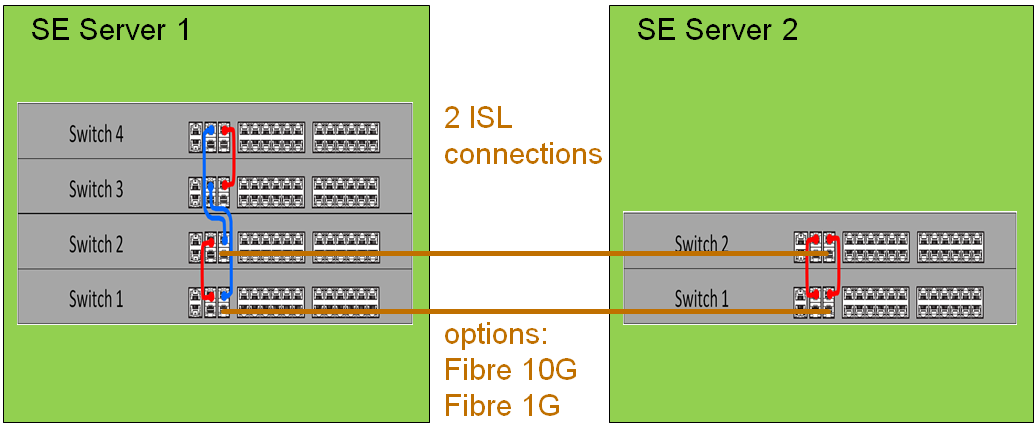The communication between MUs and SUs within the Management Cluster runs through the private (internal) management network -> MCNPR.
During Live Migration in the SU Cluster the data of the main memory is also transferred between the participating Server Units through this connection.
The Net Units (their internal LAN switches) of both SE Servers are linked with one another with ISL (ISL: Inter Switch Link) connections for this.
Basic structure:
The private management and data networks configured on the ISL connections are virtual LANs.
If an ISL connection is directed through the customer’s infrastructure then the VLAN IDs 600..608 (for private management networks) and 800..899 (for private data networks) must be provided. Other connections are possible, but they must be verified in the course of a special release or be implemented as a customer project.
Recommandations and notes
- For the Management Cluster functionality a data transfer rate of 1 Gbit/s and a round trip trime < 5 ms is recommended.
- Also a maximal distance of 15 km between the locations is recommended.
- Longer distancies and lower data transfer rates are conceivable but the realization must be tested in practice in the customer's specific configuration.
- A configuration with a redundant NU and a redundant ISL-E connection is recommended so that an single error does not lead to a complete failure of the connection.
- Note 1:
When using the 10 Gbit/s NU extension it is possible to connect the two SE Servers by a 10 Gbit/s ISL-E connection. - Note 2:
The cluster software does not check whether the above conditions are met. This has to be ensured by the customer through a suitable configuration of the infrastructure.
Among others, the private management network serves the so-called Cluster Manager to monitor units which are relevant for the cluster configuration. The Cluster Manager regularly queries these units on availability and correct function by the so-called Network heartbeat.
Depending on the result of these queries a cluster status is calculated and displayed by the SE Manager in the cluster main windows (see the cluster main windows in the following chapters). The cluster status affects the availability of the cluster functions.
Further details about the networks of the SE Server can be found in the manual “Administration and Operation“ for FUJITSU Server BS2000 SE700 / SE500 / SE300 [1].

